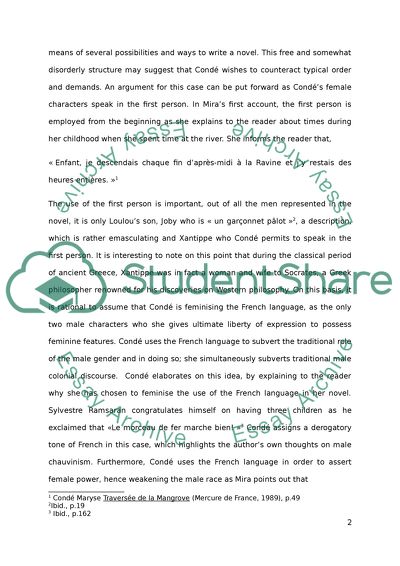Cite this document
(“A comparative analysis of French and other local languages in Conde's Essay”, n.d.)
A comparative analysis of French and other local languages in Conde's Essay. Retrieved from https://studentshare.org/miscellaneous/1554223-a-comparative-analysis-of-french-and-other-local-languages-in-condes-traversee-de-la-mangrove-and-chamoiseaus-chronique-des-sept-miseres
A comparative analysis of French and other local languages in Conde's Essay. Retrieved from https://studentshare.org/miscellaneous/1554223-a-comparative-analysis-of-french-and-other-local-languages-in-condes-traversee-de-la-mangrove-and-chamoiseaus-chronique-des-sept-miseres
(A Comparative Analysis of French and Other Local Languages in Conde'S Essay)
A Comparative Analysis of French and Other Local Languages in Conde'S Essay. https://studentshare.org/miscellaneous/1554223-a-comparative-analysis-of-french-and-other-local-languages-in-condes-traversee-de-la-mangrove-and-chamoiseaus-chronique-des-sept-miseres.
A Comparative Analysis of French and Other Local Languages in Conde'S Essay. https://studentshare.org/miscellaneous/1554223-a-comparative-analysis-of-french-and-other-local-languages-in-condes-traversee-de-la-mangrove-and-chamoiseaus-chronique-des-sept-miseres.
“A Comparative Analysis of French and Other Local Languages in Conde'S Essay”, n.d. https://studentshare.org/miscellaneous/1554223-a-comparative-analysis-of-french-and-other-local-languages-in-condes-traversee-de-la-mangrove-and-chamoiseaus-chronique-des-sept-miseres.


